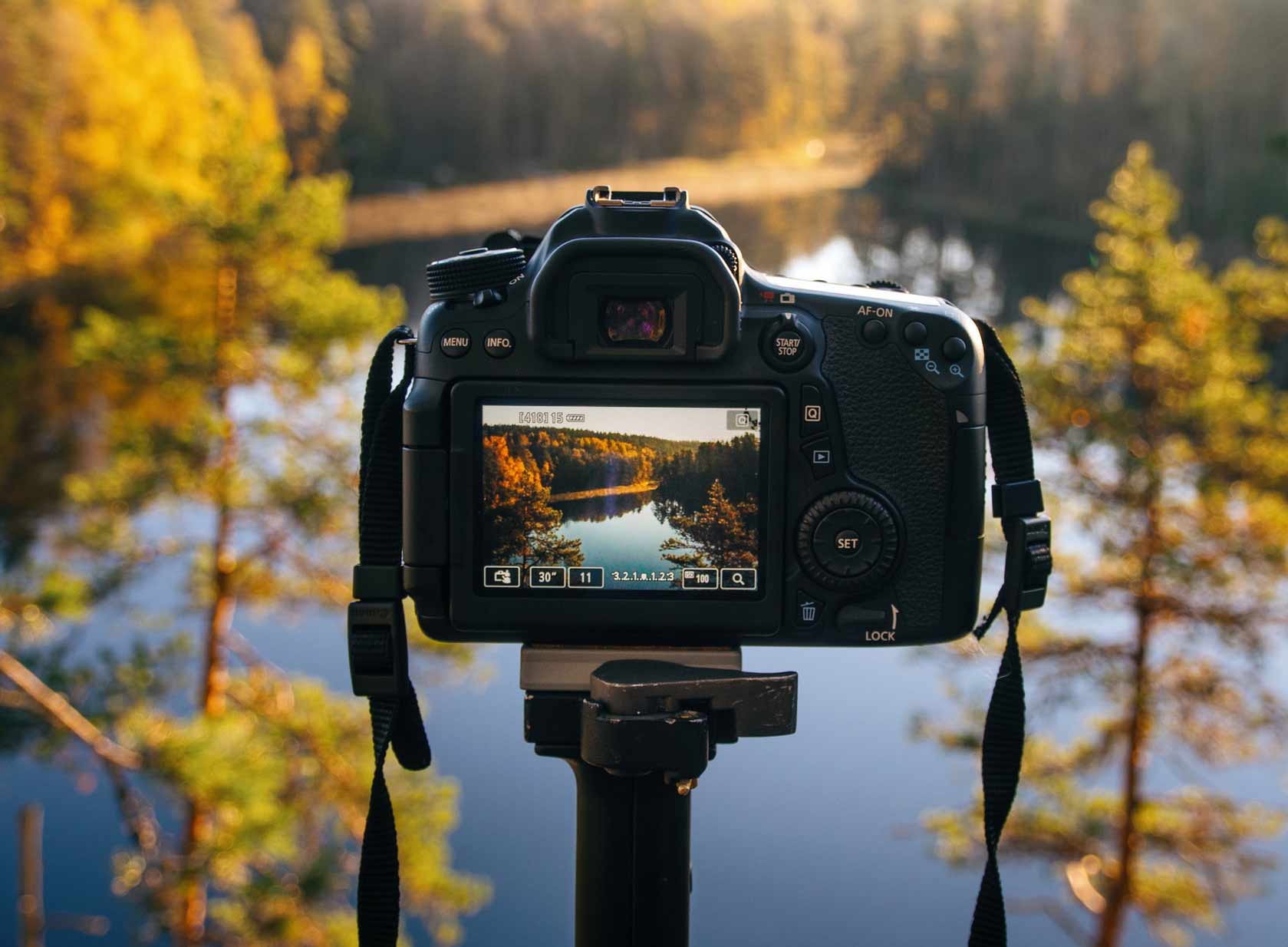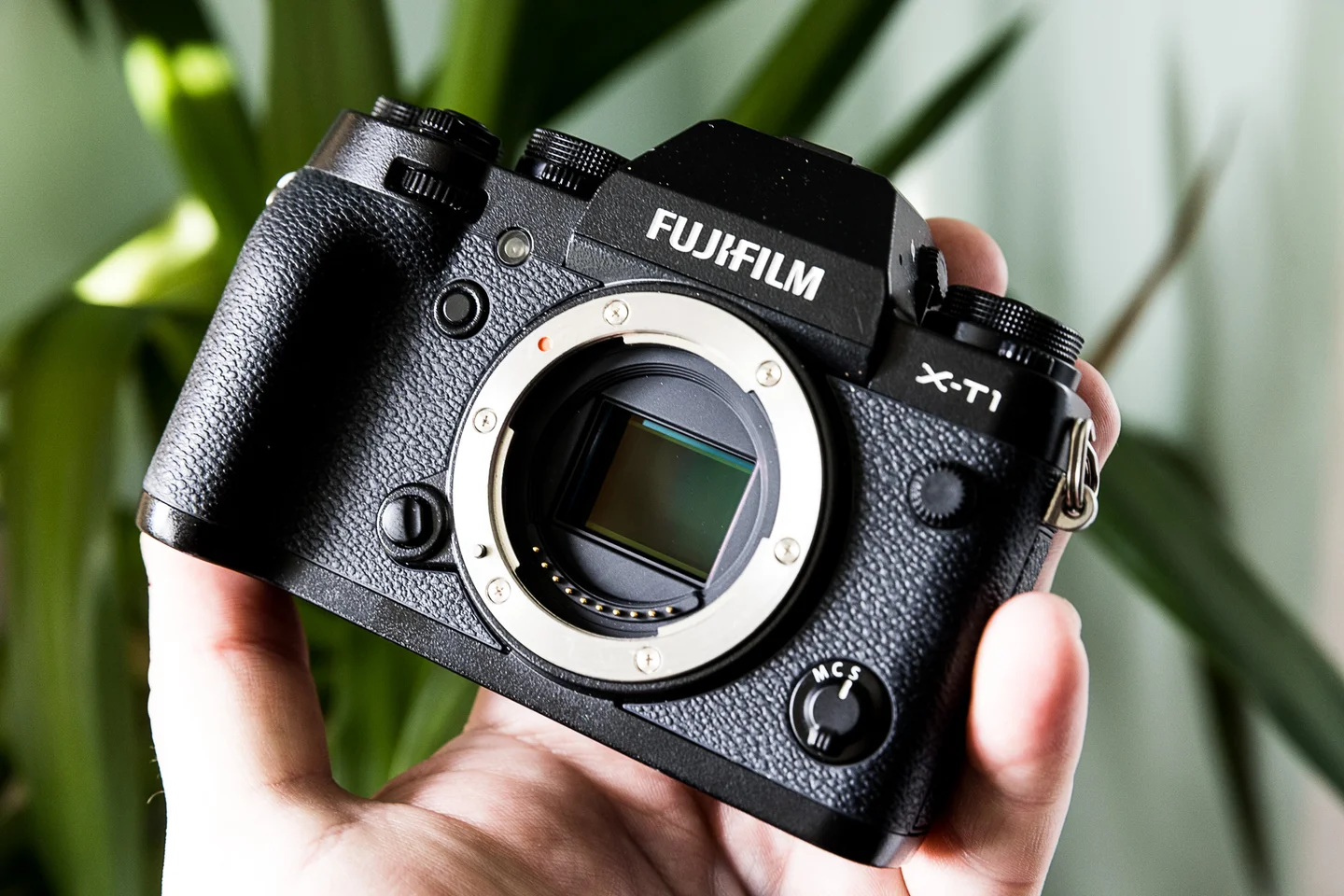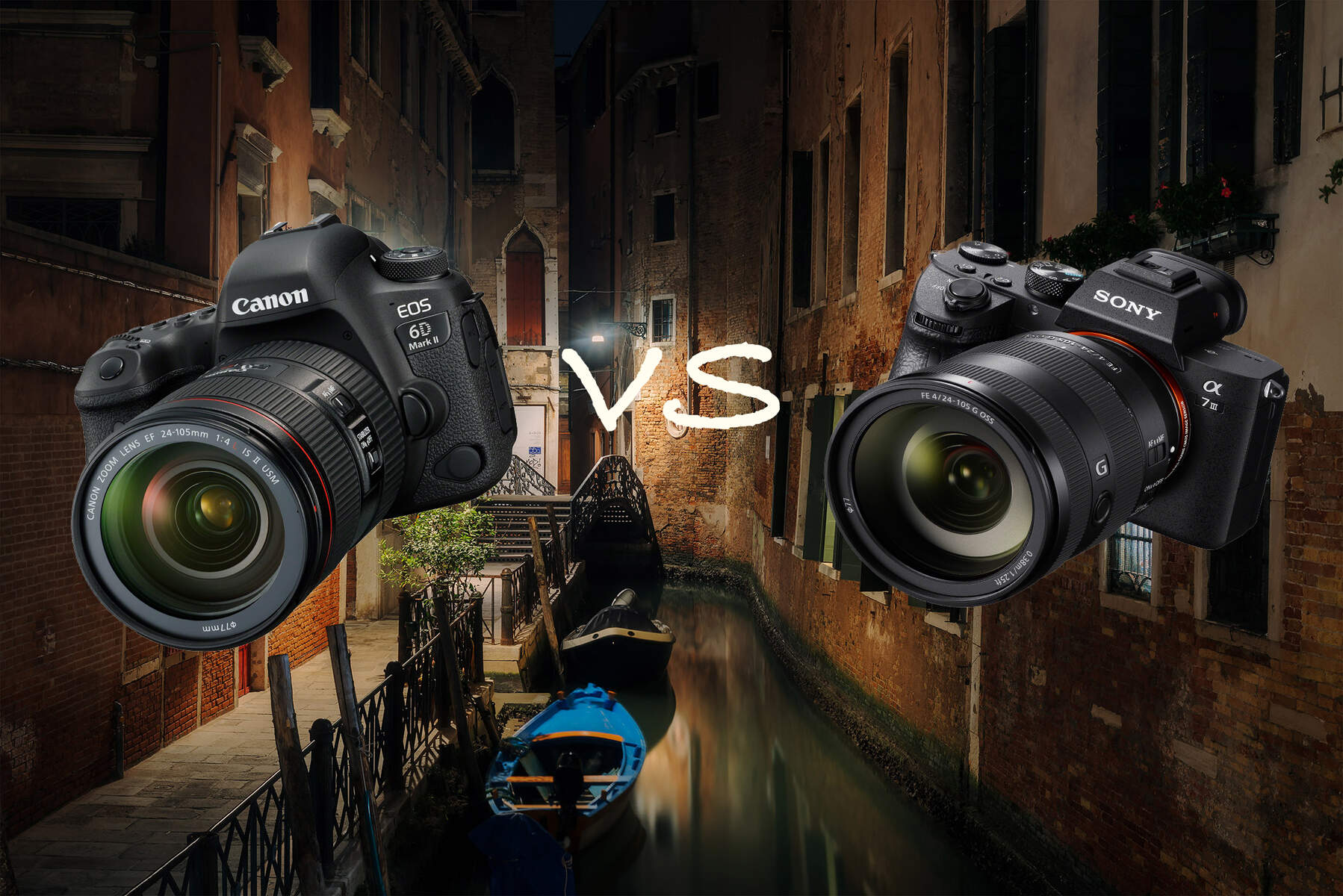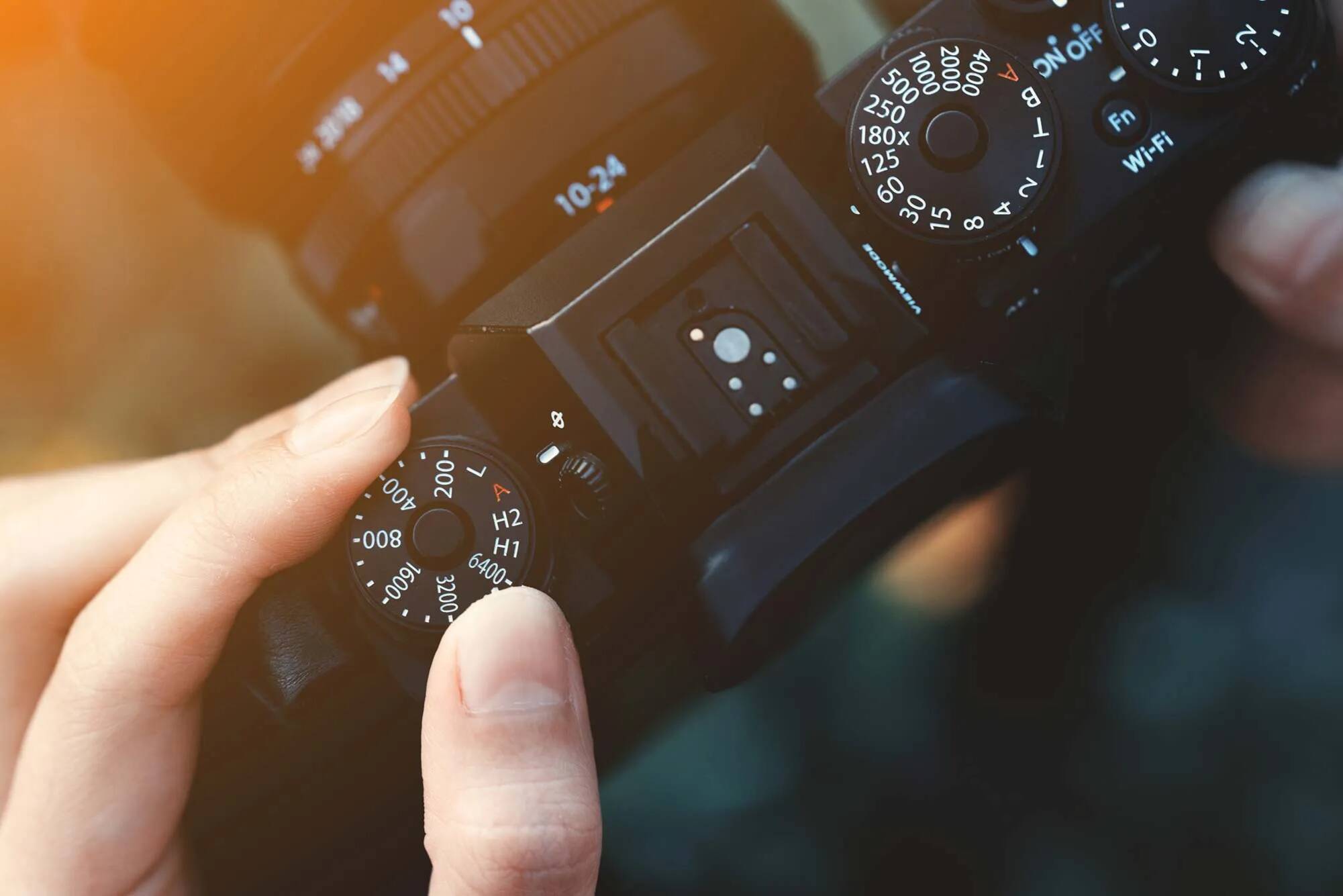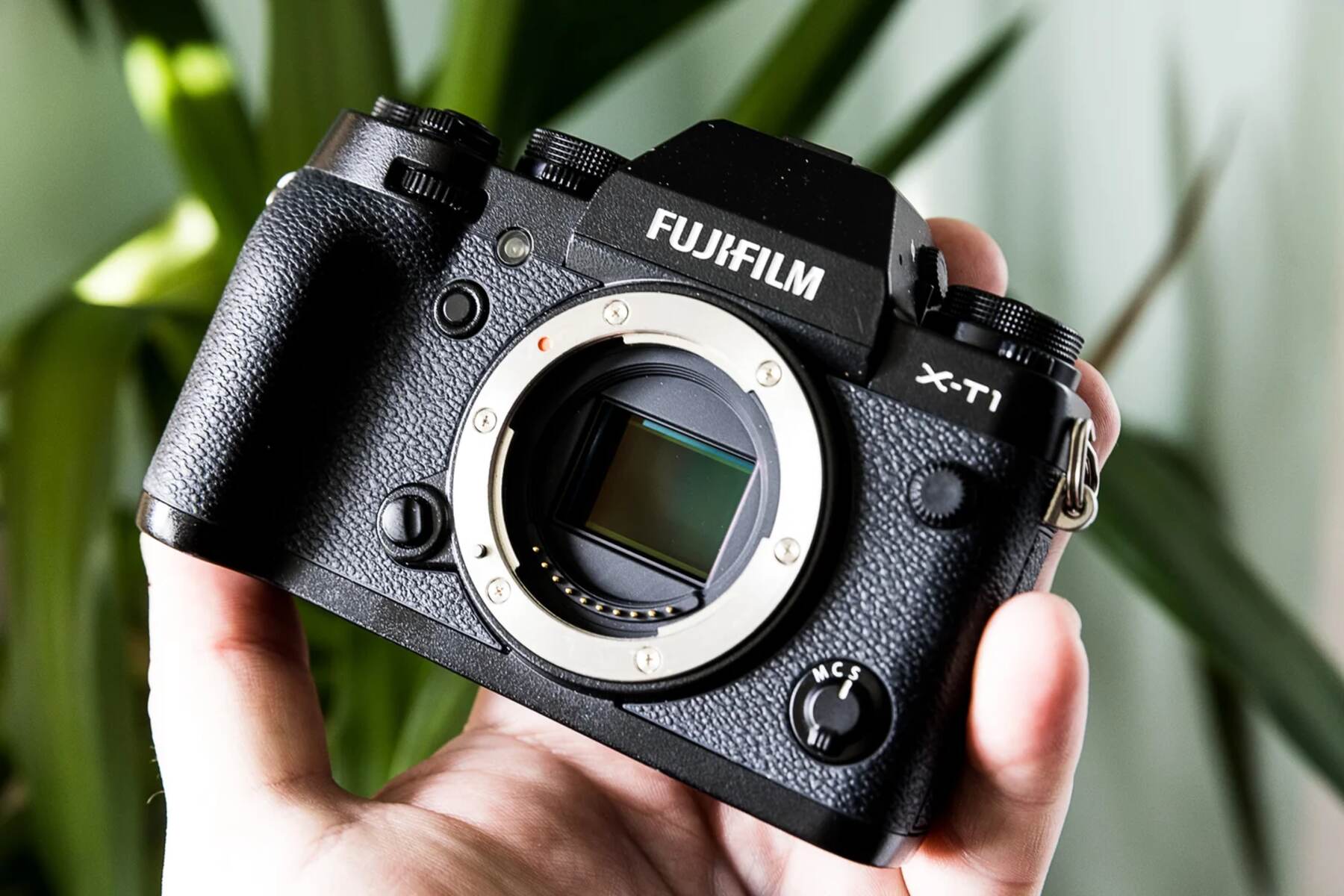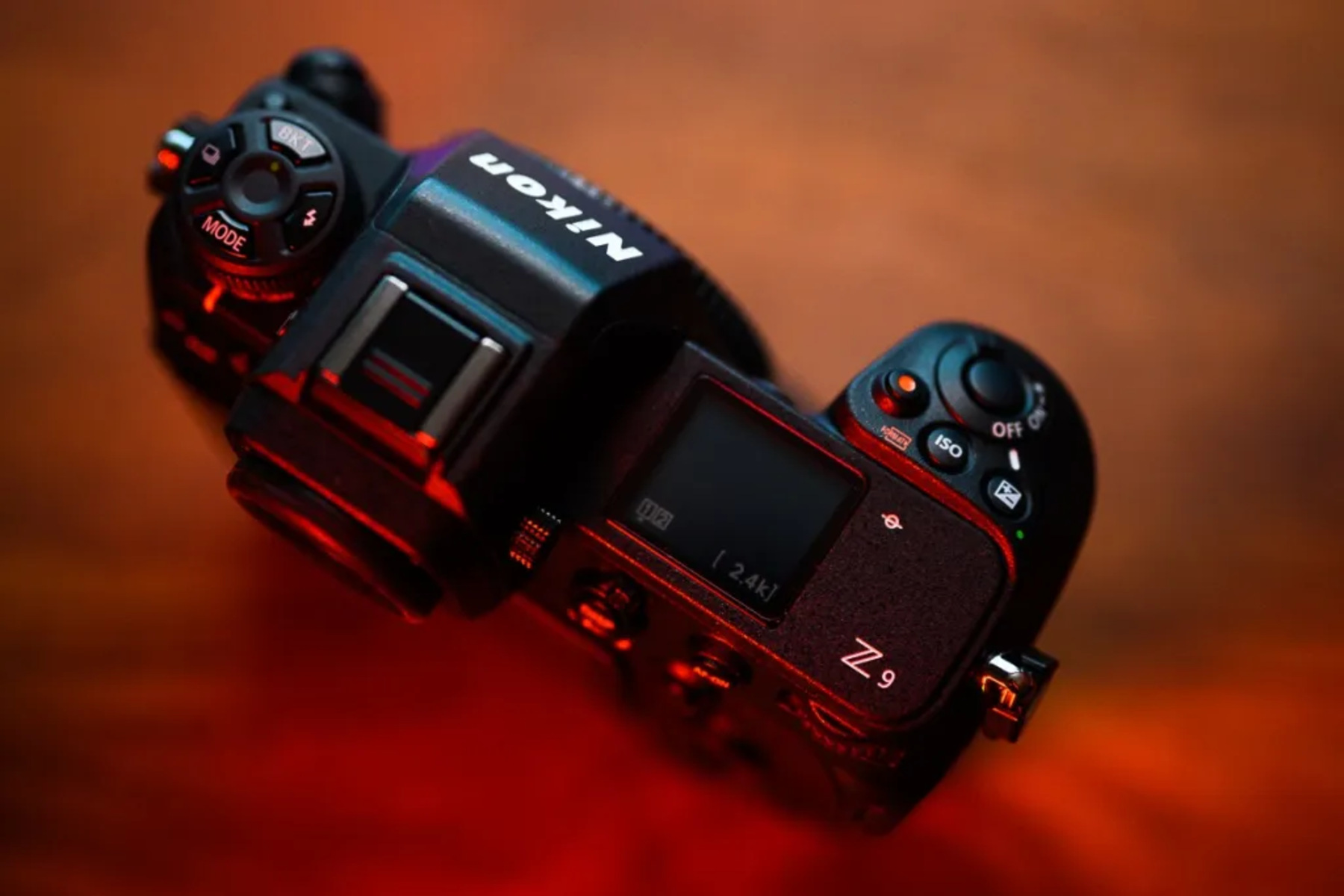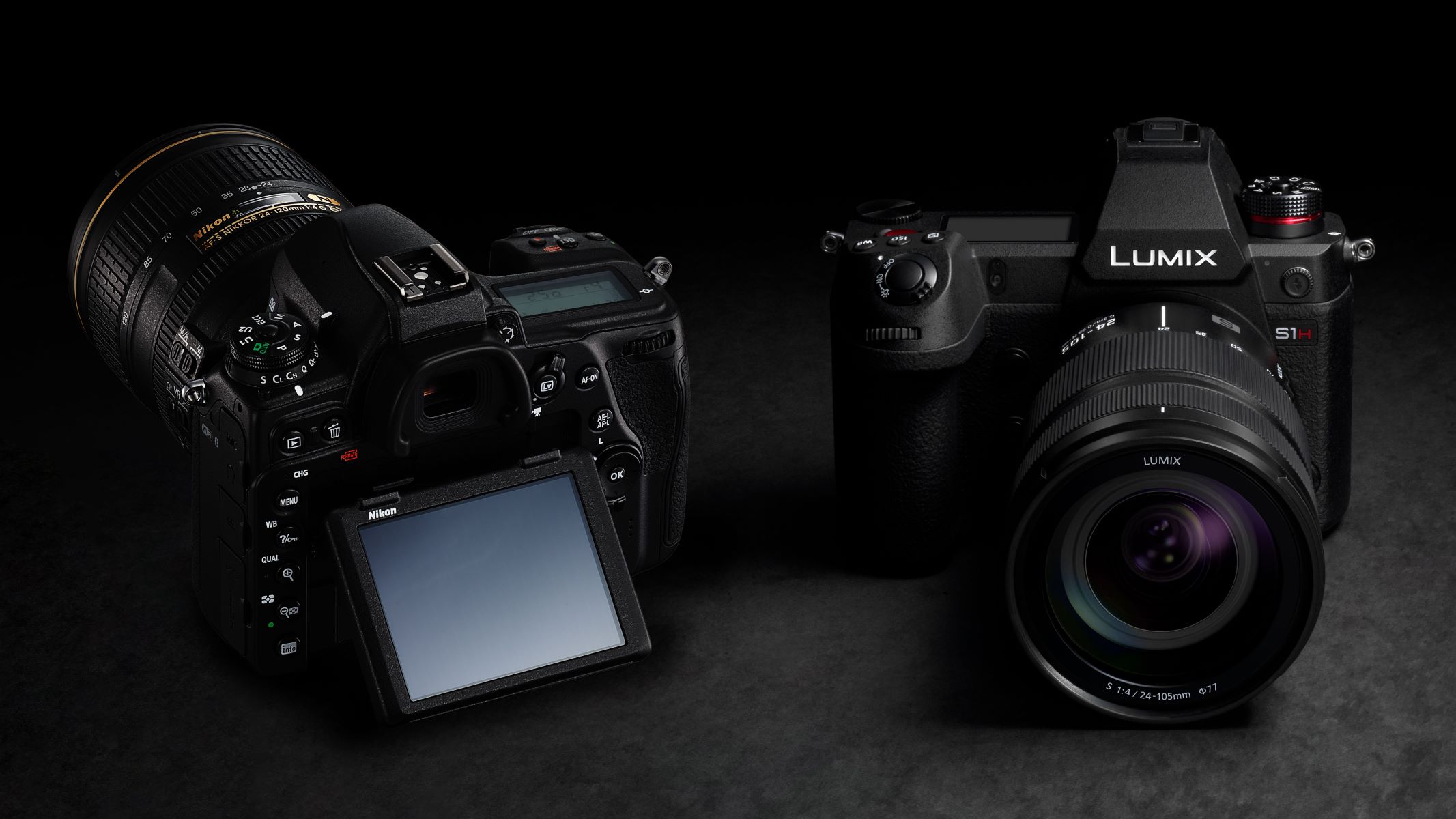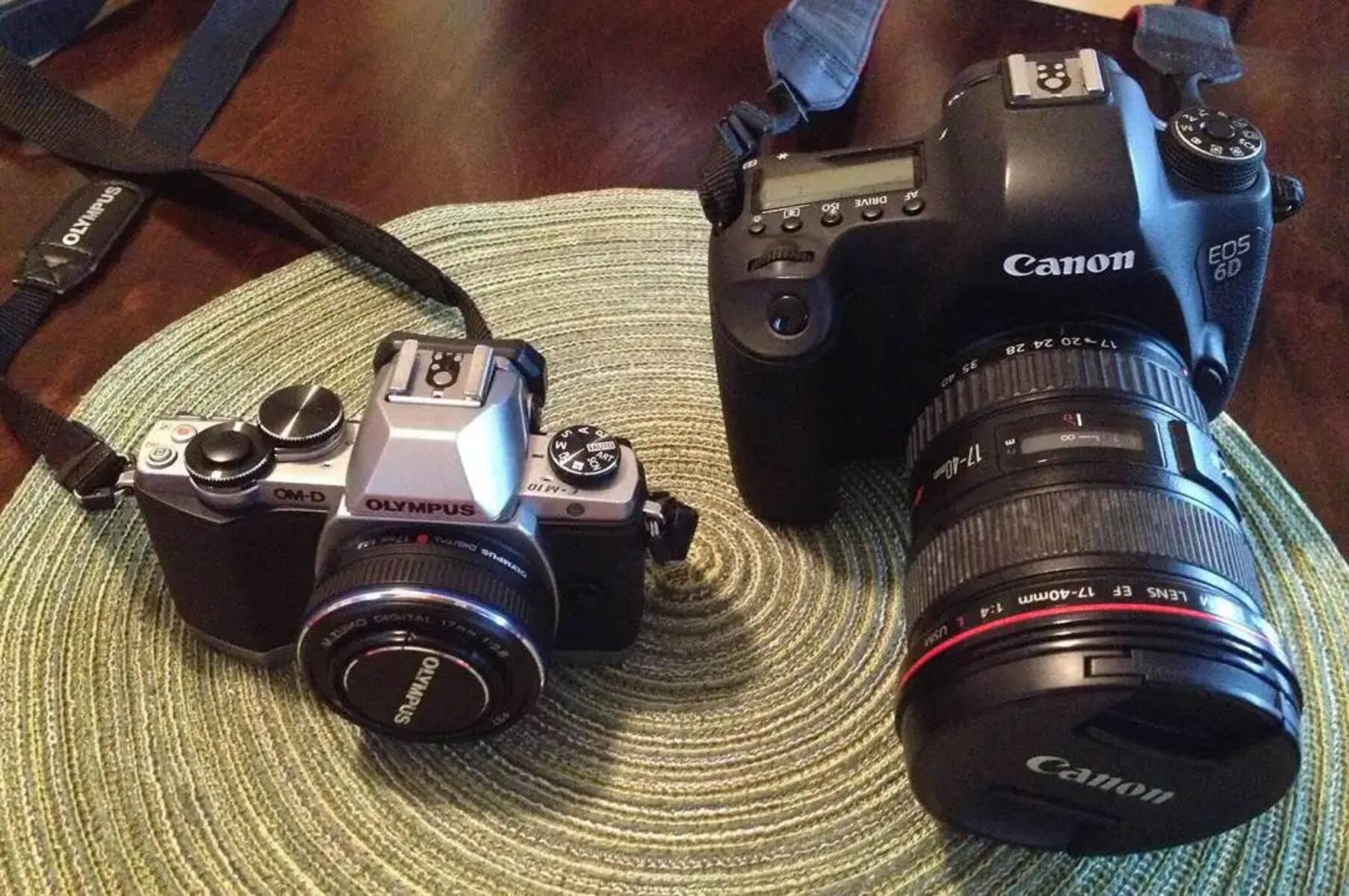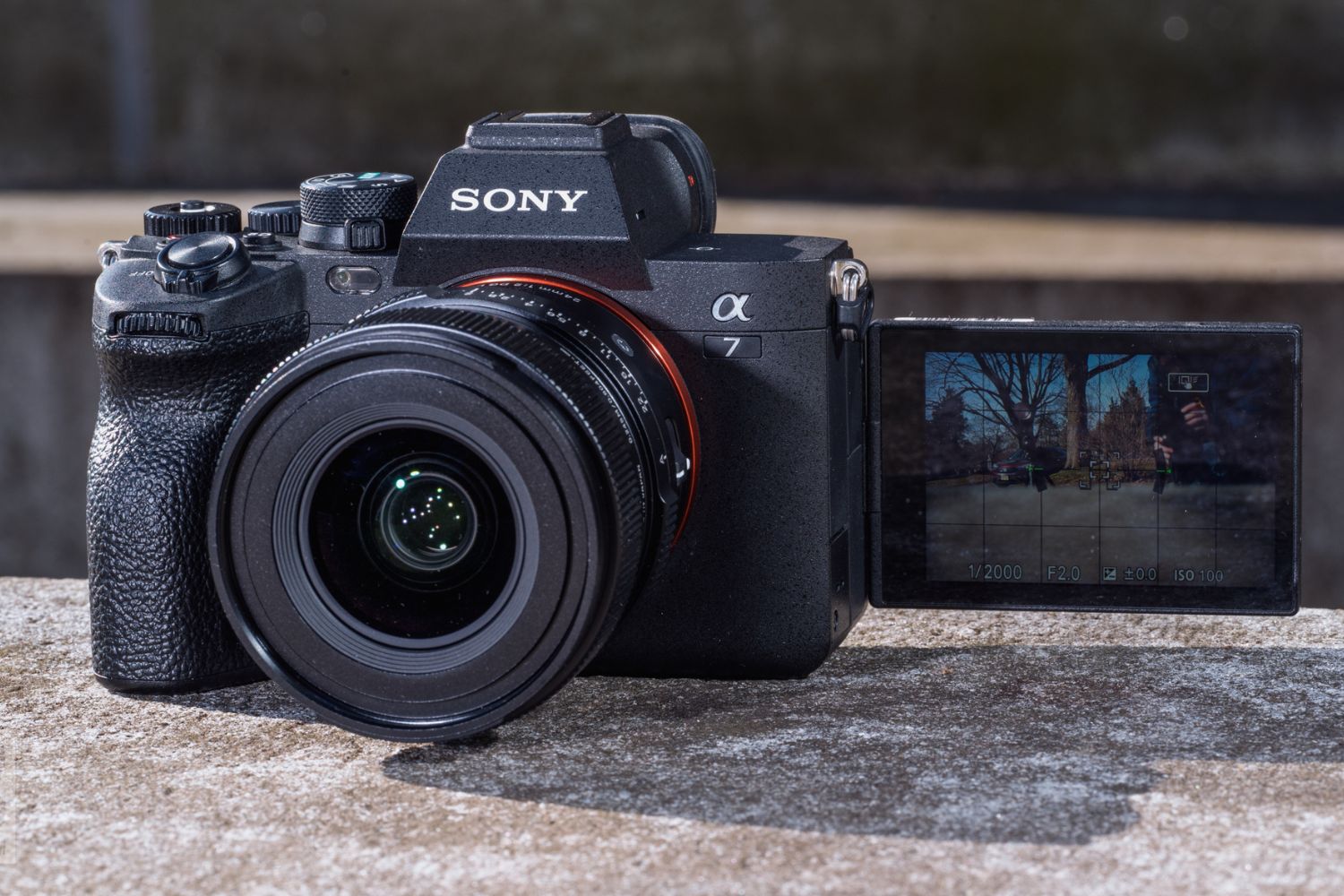Introduction
When capturing the perfect shot with a mirrorless camera, the viewfinder plays a crucial role in framing the image and providing a clear, detailed preview of the scene. Understanding how the viewfinder works and the different types available is essential for photographers seeking to harness the full potential of their equipment. In this article, we will delve into the intricacies of viewfinders in mirrorless cameras, exploring their mechanisms, advantages, and disadvantages.
The viewfinder serves as the photographer's window to the world they aim to capture. Whether it's an electronic viewfinder (EVF) or an optical viewfinder (OVF), each type offers unique benefits and limitations. By comprehending the inner workings of these viewfinders, photographers can make informed decisions about which type best suits their needs and shooting style.
Join us as we embark on a journey to uncover the mysteries of viewfinders in mirrorless cameras, shedding light on their functionality and the impact they have on the photographic experience. Let's explore the world through the lens of a viewfinder and discover the magic it brings to the art of photography.
What is a Viewfinder?
A viewfinder is a vital component of a camera that allows photographers to preview and frame the scene before capturing an image. It serves as a miniature window through which the photographer can visualize the composition, focus, and exposure of the shot. In the context of mirrorless cameras, the viewfinder can be either electronic or optical, each offering distinct features and functionalities.
For photographers, the viewfinder is an indispensable tool that enables precise composition and facilitates accurate manual focusing. By peering through the viewfinder, photographers can immerse themselves in the scene, eliminating distractions and honing in on the essential elements of the image. This direct, real-time view of the subject empowers photographers to make instantaneous adjustments to achieve the desired framing and exposure.
Furthermore, the viewfinder plays a pivotal role in challenging lighting conditions, such as bright sunlight or low-light environments, where the rear LCD screen may be less effective. The viewfinder provides a clear, unobstructed view of the scene, allowing photographers to maintain control over their composition and exposure settings regardless of external lighting factors.
Understanding the significance of the viewfinder in a mirrorless camera is essential for photographers aiming to elevate their craft. By grasping the fundamental purpose of the viewfinder and its impact on the photographic process, photographers can harness its capabilities to unleash their creative vision and capture stunning imagery.
Types of Viewfinders in Mirrorless Cameras
Viewfinders in mirrorless cameras come in two primary types: electronic viewfinders (EVFs) and optical viewfinders (OVFs). Each type offers distinct advantages and is designed to cater to different preferences and shooting scenarios.
- Electronic Viewfinder (EVF): An EVF employs a miniature high-resolution display that electronically simulates the image as seen through the camera’s lens. This digital representation provides a real-time preview of the scene, complete with exposure and white balance adjustments. EVFs offer a wealth of information overlays, such as histograms, focus peaking, and gridlines, enhancing the photographer’s ability to fine-tune the composition and exposure. Additionally, EVFs excel in low-light conditions, as they can amplify the available light, resulting in a clear and bright view even in dimly lit environments.
- Optical Viewfinder (OVF): Unlike EVFs, OVFs utilize an optical system to reflect the scene through the lens directly to the photographer’s eye. This traditional method provides a direct, unadulterated view of the subject, offering a natural and lag-free experience. OVFs are renowned for their clarity and lack of digital artifacts, making them ideal for purists who prefer an unaltered representation of the scene. However, OVFs do not display exposure and focus information overlays, requiring photographers to rely on their experience and intuition for precise adjustments.
Both EVFs and OVFs have their respective strengths, and the choice between the two often boils down to personal preference and the specific requirements of the photographic task at hand. Understanding the characteristics and capabilities of each type of viewfinder empowers photographers to make informed decisions when selecting a mirrorless camera that aligns with their shooting style and creative vision.
Electronic Viewfinder (EVF)
The electronic viewfinder (EVF) is a technological marvel that has revolutionized the way photographers interact with their mirrorless cameras. By leveraging advanced display technology, EVFs offer a dynamic and customizable viewing experience that caters to the diverse needs of photographers.
One of the standout features of an EVF is its ability to provide a real-time, high-resolution preview of the scene, complete with exposure and color adjustments. This instant visual feedback empowers photographers to fine-tune their composition and exposure settings on the fly, ensuring that they capture the desired image with precision. Additionally, EVFs often incorporate a wealth of informational overlays, including histograms, focus peaking, and gridlines, enhancing the photographer’s ability to gauge and adjust critical parameters.
In challenging lighting conditions, such as low light or high-contrast scenes, EVFs shine by amplifying the available light and providing a clear, detailed view of the subject. This capability enables photographers to maintain control over their composition and focus, even when traditional optical viewfinders may struggle to deliver a clear image.
Furthermore, EVFs have the advantage of offering a customizable viewing experience, allowing photographers to adjust the display settings to suit their preferences. This flexibility extends to features such as magnification, color balance, and virtual horizon indicators, providing photographers with a tailored and immersive viewing environment.
Despite their numerous advantages, EVFs are not without limitations. Some photographers may find that prolonged use of an EVF can lead to eye fatigue, particularly when shooting in bright environments for extended periods. Additionally, EVFs consume power, impacting the camera’s battery life, although advancements in technology have significantly mitigated this issue in modern mirrorless cameras.
Overall, the electronic viewfinder represents a leap forward in photographic technology, offering a wealth of features and capabilities that enhance the shooting experience. By embracing the EVF, photographers can harness its real-time feedback and customizable display to elevate their craft and capture stunning imagery with confidence.
Optical Viewfinder (OVF)
The optical viewfinder (OVF) represents a traditional yet revered approach to framing and capturing images, offering a direct and unadulterated view of the scene through the camera’s lens. Renowned for its clarity and lack of digital augmentation, the OVF provides a pure and immersive viewing experience for photographers who value a natural representation of the subject.
One of the key advantages of an OVF is its instantaneous, lag-free display of the scene, allowing photographers to observe and react to the subject with minimal delay. This direct optical connection between the lens and the photographer’s eye provides a visceral and authentic viewing experience, particularly cherished by purist photographers who prioritize an unaltered representation of the scene.
OVFs excel in situations where the scene’s dynamic range or complexity may challenge electronic displays, as they faithfully reflect the natural lighting and composition without digital artifacts or processing. This characteristic makes OVFs particularly appealing for photographers working in diverse and unpredictable environments where the unembellished view of the scene is paramount.
However, it’s important to note that OVFs do not provide informational overlays, such as histograms or focus peaking, which are prevalent in electronic viewfinders (EVFs). This means that photographers relying solely on an OVF must draw upon their experience and intuition to make exposure and focus adjustments, as they do not have the benefit of real-time visual feedback.
While OVFs offer unparalleled clarity and immediacy, they have limitations in low-light conditions, as the available light may not always suffice to provide a clear and detailed view of the scene. Additionally, OVFs may struggle to accommodate the diverse needs of photographers who require customizable display settings and real-time informational overlays.
In essence, the optical viewfinder embodies a timeless and uncompromising approach to visualizing and capturing images, appealing to photographers who prioritize the unadulterated representation of the scene. By embracing the OVF, photographers can immerse themselves in the unfiltered beauty of the world, relying on their instincts and expertise to frame and capture compelling imagery.
How Does a Viewfinder Work in a Mirrorless Camera?
The operation of a viewfinder in a mirrorless camera is a fascinating interplay of technology and optics, enabling photographers to visualize and capture compelling images with precision and creativity. Unlike traditional DSLR cameras, which employ an optical viewfinder (OVF) that reflects the scene using a complex system of mirrors, mirrorless cameras utilize electronic viewfinders (EVFs) or rely on the rear LCD screen for image preview and composition.
Electronic Viewfinder (EVF): In a mirrorless camera equipped with an EVF, the process begins with the camera’s sensor capturing the incoming light through the lens. This digital image data is then processed and transmitted to the EVF’s high-resolution display in real time. The EVF presents a faithful representation of the scene, complete with exposure and color adjustments, allowing photographers to preview and fine-tune their composition with precision. Furthermore, EVFs often incorporate informational overlays, such as histograms and focus peaking, enhancing the photographer’s ability to gauge critical parameters and make informed decisions.
Optical Viewfinder (OVF): Some mirrorless cameras offer the option of using an external optical viewfinder, which can be attached to the camera’s accessory shoe. The OVF operates similarly to those found in traditional film cameras, providing a direct, unadulterated view of the scene through the camera’s lens. This optical connection between the subject and the photographer’s eye facilitates an immersive and immediate viewing experience, allowing photographers to observe and react to the scene with minimal delay.
Rear LCD Screen: In the absence of a dedicated viewfinder, many mirrorless cameras rely on the rear LCD screen to provide a live preview of the scene. This approach offers a versatile and intuitive means of framing and composing images, particularly for photographers who prefer a clear and unobstructed view of the subject. The rear LCD screen also serves as the primary interface for adjusting camera settings and reviewing captured images, offering a comprehensive tool for both composition and playback.
Regardless of the specific type of viewfinder employed, the ultimate goal remains consistent: to provide photographers with a reliable and immersive means of visualizing the scene and capturing compelling imagery. By understanding the inner workings of the viewfinder in a mirrorless camera, photographers can leverage this essential tool to refine their craft and bring their creative vision to life.
Advantages and Disadvantages of Using a Viewfinder
Viewfinders are integral to the photographic process, offering unique advantages and presenting certain limitations that photographers must consider when framing and capturing images. Understanding the pros and cons of using a viewfinder empowers photographers to make informed decisions based on their specific shooting scenarios and creative preferences.
Advantages:
- Precise Composition: Viewfinders enable photographers to precisely frame their shots, allowing for accurate composition and the elimination of distracting elements from the scene.
- Enhanced Stability: By bringing the camera to the eye to peer through the viewfinder, photographers can achieve greater stability, reducing the likelihood of camera shake and resulting in sharper images.
- Improved Visibility: Viewfinders offer a clear and unobstructed view of the scene, particularly beneficial in bright sunlight or low-light conditions where the rear LCD screen may be less effective.
- Real-Time Feedback: Whether through an electronic or optical viewfinder, photographers receive real-time visual feedback, allowing for immediate adjustments to exposure, focus, and composition.
- Immersive Experience: Using a viewfinder provides an immersive and focused experience, allowing photographers to connect deeply with the subject and the photographic process.
Disadvantages:
- Eye Fatigue: Prolonged use of a viewfinder, especially electronic viewfinders, may lead to eye fatigue, particularly in bright environments or during extended shooting sessions.
- Limited Visibility: In certain shooting scenarios, such as low-light conditions, viewfinders may struggle to provide a clear and detailed view of the scene, impacting the photographer’s ability to compose and focus accurately.
- Power Consumption: Electronic viewfinders consume power, which can affect the camera’s battery life, necessitating additional precautions and management of power resources during extended shoots.
- Information Overload: While electronic viewfinders offer informational overlays, some photographers may find this feature distracting or overwhelming, impacting their ability to focus solely on the visual composition of the scene.
- Adaptation Period: For photographers transitioning from using the rear LCD screen to a viewfinder, there may be an initial adjustment period to acclimate to the different viewing experience and shooting dynamics.
By weighing the advantages and disadvantages of using a viewfinder, photographers can tailor their approach to framing and capturing images based on the specific demands of each photographic opportunity, ultimately enhancing their ability to translate their creative vision into compelling imagery.
Conclusion
Viewfinders in mirrorless cameras serve as indispensable tools that empower photographers to visualize, compose, and capture compelling imagery with precision and creativity. Whether through electronic viewfinders (EVFs) or optical viewfinders (OVFs), photographers are presented with a range of options, each offering distinct advantages and considerations.
By understanding the inner workings of these viewfinders, photographers can harness their capabilities to refine their craft and adapt to diverse shooting scenarios. Electronic viewfinders provide real-time feedback, customizable displays, and enhanced visibility in challenging lighting conditions, while optical viewfinders offer a direct, unadulterated view of the scene and immediate responsiveness.
Moreover, the advantages and disadvantages of using a viewfinder underscore the need for photographers to make informed decisions based on their specific shooting requirements and creative preferences. While viewfinders facilitate precise composition, stability, and real-time feedback, they may also present challenges such as eye fatigue, limited visibility in low-light conditions, and power consumption.
Ultimately, the choice of using a viewfinder is a deeply personal one, influenced by the photographer’s shooting style, artistic vision, and adaptability to different viewing experiences. Whether peering through an EVF to fine-tune exposure settings or embracing the unaltered view of the scene through an OVF, photographers must weigh the pros and cons to optimize their photographic process.
As technology continues to evolve, viewfinders in mirrorless cameras will likely undergo further refinements, offering enhanced features and addressing existing limitations. This progression will provide photographers with even more versatile and immersive tools to engage with their subjects and capture stunning imagery.
In conclusion, the viewfinder remains an essential cornerstone of the photographic experience, offering photographers a window to the world through which they can express their unique perspectives and artistic visions.







